- Clone
- 9E9A8 (See other available formats)
- Regulatory Status
- RUO
- Other Names
- Dendritic Cell-Specific Intercellular adhesion molecule 3 (ICAM-3)-Grabbing Nonintegrin
- Isotype
- Mouse IgG2a, κ
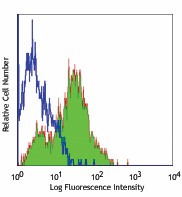
-

Human monocytes-derived dendritic cells stained with 9E9A8 FITC
| Cat # | Size | Price | Quantity Check Availability | ||
|---|---|---|---|---|---|
| 330103 | 25 tests | $106.00 | |||
| 330104 | 100 tests | $229.00 | |||
CD209, known as Dendritic Cell-Specific Intercellular adhesion molecule 3 (ICAM-3)-Grabbing Nonintegrin (DC-SIGN), is a 44 kD type II transmembrane glycoprotein and a member of the C-type lectin family. CD209 is expressed on myeloid dendritic cells, placental macrophages, liver and placental endothelial cells. CD209 binds to ICAM-3 (CD50), ICAM-2 (CD102), and Butyrophilin (BTN2A1), and mediates dendritic cell migration and T cell proliferation. Importantly, CD209 is a receptor of HIV-1 and some other viruses (such as West Nile virus, hepatitis C virus, etc), and some bacteria or parasites. It plays a critical role in capturing and internalizing those pathogens. LSP1 (leukocyte-specific protein 1) interacts with the cytoplasmic domain of CD209 and mediates transport of HIV to the proteasome.
Product Details
- Verified Reactivity
- Human
- Antibody Type
- Monoclonal
- Host Species
- Mouse
- Immunogen
- Extracellular domain of human DC-SIGN
- Formulation
- Phosphate-buffered solution, pH 7.2, containing 0.09% sodium azide and BSA (origin USA)
- Preparation
- The antibody was purified by affinity chromatography, and conjugated with FITC under optimal conditions.
- Concentration
- Lot-specific (to obtain lot-specific concentration and expiration, please enter the lot number in our Certificate of Analysis online tool.)
- Storage & Handling
- The antibody solution should be stored undiluted between 2°C and 8°C, and protected from prolonged exposure to light. Do not freeze.
- Application
-
FC - Quality tested
- Recommended Usage
-
Each lot of this antibody is quality control tested by immunofluorescent staining with flow cytometric analysis. For flow cytometric staining, the suggested use of this reagent is 5 µl per million cells in 100 µl staining volume or 5 µl per 100 µl of whole blood.
- Excitation Laser
-
Blue Laser (488 nm)
- Application Notes
-
Additional reported applications (for the relevant formats) include: immunohistochemistry on frozen tissue sections1 and spatial biology (IBEX)2,3.
- Additional Product Notes
-
View more applications data for this product in our Scientific Poster Library.
-
Application References
(PubMed link indicates BioLegend citation) - Product Citations
-
- RRID
-
AB_1134048 (BioLegend Cat. No. 330103)
AB_1134048 (BioLegend Cat. No. 330104)
Antigen Details
- Distribution
-
Dendritic cells
- Cell Type
- Dendritic cells
- Biology Area
- Immunology, Innate Immunity
- Molecular Family
- Adhesion Molecules, CD Molecules
- Antigen References
-
1. Granelli-Piperno A, et al. 2005. J Immunol. 175:4265.
- Gene ID
- 30835 View all products for this Gene ID
- UniProt
- View information about CD209 on UniProt.org
Other Formats
View All CD209 Reagents Request Custom Conjugation| Description | Clone | Applications |
|---|---|---|
| Purified anti-human CD209 (DC-SIGN) | 9E9A8 | FC,IHC-F |
| FITC anti-human CD209 (DC-SIGN) | 9E9A8 | FC |
| PE anti-human CD209 (DC-SIGN) | 9E9A8 | FC |
| APC anti-human CD209 (DC-SIGN) | 9E9A8 | FC |
| PerCP/Cyanine5.5 anti-human CD209 (DC-SIGN) | 9E9A8 | FC |
| Alexa Fluor® 647 anti-human CD209 (DC-SIGN) | 9E9A8 | FC,ICC,SB |
| PE/Cyanine7 anti-human CD209 (DC-SIGN) | 9E9A8 | FC |
| APC/Fire™ 750 anti-human CD209 (DC-SIGN) | 9E9A8 | FC |
| Brilliant Violet 421™ anti-human CD209 (DC-SIGN) | 9E9A8 | FC |
| TotalSeq™-A0597 anti-human CD209 (DC-SIGN) | 9E9A8 | PG |
| TotalSeq™-C0597 anti-human CD209 (DC-SIGN) | 9E9A8 | PG |
| TotalSeq™-B0597 anti-human CD209 (DC-SIGN) | 9E9A8 | PG |
| TotalSeq™-D0597 anti-human CD209 (DC-SIGN) | 9E9A8 | PG |
| PE/Dazzle™ 594 anti-human CD209 (DC-SIGN) | 9E9A8 | FC |
| APC/Cyanine7 anti-human CD209 (DC-SIGN) | 9E9A8 | FC |
Compare Data Across All Formats
This data display is provided for general comparisons between formats.
Your actual data may vary due to variations in samples, target cells, instruments and their settings, staining conditions, and other factors.
If you need assistance with selecting the best format contact our expert technical support team.
-
Purified anti-human CD209 (DC-SIGN)

Human monocyte-derived dendritic cells stained with purified... -
FITC anti-human CD209 (DC-SIGN)

Human monocytes-derived dendritic cells stained with 9E9A8 F... -
PE anti-human CD209 (DC-SIGN)
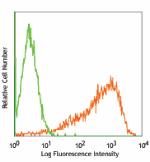
Monocyte-derived dendritic cells stained with 9E9A8 PE -
APC anti-human CD209 (DC-SIGN)

Human monocytes-derived dendritic cells were stained with CD... -
PerCP/Cyanine5.5 anti-human CD209 (DC-SIGN)
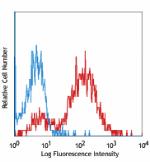
Human monocytes-derived dendritic cells stained with 9E9A8 P... -
Alexa Fluor® 647 anti-human CD209 (DC-SIGN)
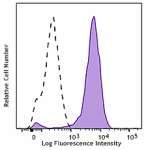
Human monocytes-derived dendritic cells were stained with CD... 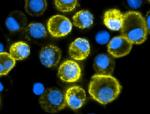
Human peripheral blood mononuclear cell (PBMC) derived dendr... 
Confocal image of human lymph node sample acquired using the... -
PE/Cyanine7 anti-human CD209 (DC-SIGN)
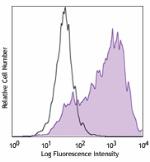
Human monocytes-derived dendritic cells were stained with CD... -
APC/Fire™ 750 anti-human CD209 (DC-SIGN)
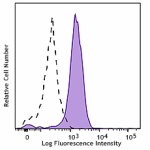
Human monocytes-derived dendritic cells were stained with CD... -
Brilliant Violet 421™ anti-human CD209 (DC-SIGN)

Human monocytes-derived dendritic cells were stained with CD... -
TotalSeq™-A0597 anti-human CD209 (DC-SIGN)
-
TotalSeq™-C0597 anti-human CD209 (DC-SIGN)
-
TotalSeq™-B0597 anti-human CD209 (DC-SIGN)
-
TotalSeq™-D0597 anti-human CD209 (DC-SIGN)
-
PE/Dazzle™ 594 anti-human CD209 (DC-SIGN)
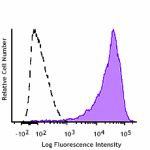
Human monocytes-derived dendritic cells were stained with an... -
APC/Cyanine7 anti-human CD209 (DC-SIGN)
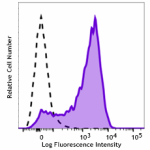
Human monocyte-derived dendritic cells were stained with ant...
